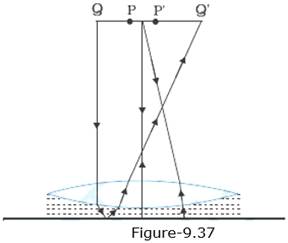Figure 9.37 shows an equiconvex lens (of refractive index 1.50) in contact with a liquid layer on top of a plane mirror. A small needle with its tip on the principal axis is moved along the axis until its inverted image is found at the position of the needle. The distance of the needle from the lens is measured to be 45.0cm. The liquid is removed and the experiment is repeated. The new distance is measured to be 30.0cm. What is the refractive index of the liquid?

Given:
Focal length of the convex lens, f1 = 30 cm
The liquid acts as a mirror. Focal length of the liquid = f2
Focal length of the system (convex lens + liquid), f = 45 cm
Here we have combination of lenses,
For a pair of optical systems placed in contact, the equivalent focal length is given as:
![]() …(1)
…(1)
By putting the values in equation (1), we can evaluate f2,
![]()
f2 = – 90cm
Hence, the focal length of liquid is -90 cm
Let the refractive index of the lens be and the radius of curvature of one surface be R. Hence, the radius of curvature of the other surface is −R.
R can be obtained using the relation:
![]() = (μ1−1)(
= (μ1−1)(![]() ) …(2)
) …(2)
Putting the values in equation (2), we get,
130 = (1.5 – 1) (2/R)
By the solving the above equation we get,
R = 30cm
Let μ2 be the refractive index of the liquid.
Radius of curvature of the liquid on the side of the plane mirror = ∞
Radius of curvature of the liquid on the side of the lens, R = −30 cm
The value of μ2 can be calculated using the relation:
![]() = (μ2−1) × (
= (μ2−1) × (![]() ) …(3)
) …(3)
By plugging the values in equation 3, we get,
μ2 – 1 = 1/3
Therefore, μ2 = 1.33
Hence, the refractive index of the liquid is 1.33.